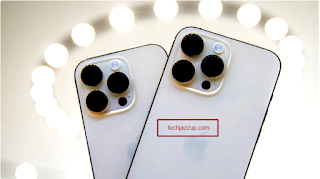Best New iPhone 14 Features Have Been on Android for 2022
Many of the features that Apple unveiled with bated breath have been available on Android devices for years, but the iPhone faithful who are totally invested in Apple’s ecosystem might not be aware of this.
It serves as a reminder to not accept all claims made, even by well-known companies like Apple, at face value. Although hands-on experiences with the iPhone 14 and iPhone 14 Pro do indicate that both will be reliable gadgets, it’s best to consider any impending major purchase decision — the Pro starts at $999 — in the proper context.
Pixel binning was used by Android before the iPhone 14
The 48-megapixel camera on the iPhone 14 Pro will be a first for an iPhone model. The number of pixels is four times higher than for the standard iPhone 14 and the iPhone 13 Pro from the previous year. But it’s challenging for each pixel to receive enough light to produce a good image when there are more pixels crammed onto a small smartphone camera sensor.
Budget Android phones and devices like the Samsung Galaxy S21, OnePlus 9, and Xiaomi Mi 11 Ultra combine groups of pixels to act as a single large pixel to combat this. Pixel binning is a workaround that enables sensors to process incoming light while preserving high resolution.
Product manager Vitor Silva was careful to emphasise that Apple is bringing a “brand new class of camera to iPhone” rather than that the company was the first to employ this strategy during the “Far Out” presentation.
Before the iPhone 14, Android had video stabilization.
Smartphone videography has long struggled with shaky video. Over the years, phone manufacturers have improved their ability to minimise shaky video, but not to the level of a GoPro-style action camera. Modern smartphones with Active Stability and Super Steady modes, such as the Google Pixel 5 from 2020 and the Samsung Galaxy S20, enable users to capture smooth, GoPro-like video while moving.
Apple’s new Action Mode, which should produce interesting shots when filming while running, will be available on all iPhone 14 models. As is typical with other stabilisation techniques, it does appear as though the mode will punch the image in for a closer crop. In either case, Apple is coming to this late.
Before the iPhone 14, Android had an always-on display.
Android has had some form of always-on display technology for many years. When it was first introduced, the feature was a standard on the now-defunct Lumia Windows Phones. Even before Samsung, LG introduced the feature in 2013 its smartwatches. With always-on, important details like the time or upcoming events on the calendar are always visible without the need to tap or touch the device.
The Super Retina XDR display on the iPhone 14 Pro uses LTPO technology, which, according to Apple’s senior vice president of marketing Greg “Joz” Joswiak, enables the screen to run at a slower 1Hz refresh rate and consume less power. That honors goes to the Samsung Galaxy S22 Ultra from earlier this year, which featured the same display tech.
Before new iPhone 14 Features, Android had a pill-shaped selfie camera cutout.
The prominent notch that sits at the top of the display has been a distinguishing feature of recent iPhone generations. Apple is following Android in ditching the notch in favour of a pill-shaped cutout with best new iPhone 14 Features Pro.
In 2017, when Apple debuted the notch with the iPhone X, Samsung was quick to mock the peculiar design choice. Android developers looked for ways to quickly limit the size of their own selfie-camera notches by either using hole-punch cutouts or much smaller display striations. In order to completely free up the screen, the OnePlus 7 Pro went so far as to include a mechanism that allowed the selfie camera to pop-out of the frame. With an under-display selfie camera, the Samsung Galaxy Z Fold 4’s inner display is almost completely unobstructed.
In either case, Apple has lagged behind in abandoning the notch. Additionally, the new pill-shaped cutout is clearly wider. Dynamic Island, a software feature that better integrates the cutout into the phone’s user interface with distinctive animations, has been added, making the black trough at least tolerable.
Apple is deserving of praise.
Not all of the iPhone 14’s features were based on earlier Android innovations. Unless Google overthrows it with the Pixel 7 later this year, the A16 Bionic chip on the iPhone 14 Pro appears to be a beast of a mobile processor and will probably remain king in the smartphone world. With a peak brightness of 2,000 nits, the Super Retina XDR display outshines the Galaxy S22 Ultra, which only manages 1,750 nits. Although the iPhone 14 lacks the bulky satellite phone feature known as Emergency SOS, it still allows users to call for assistance in the event of an emergency in a remote area of the US or Canada. Additionally, the TrueDepth front-facing camera will enhance the bokeh in selfies.
All things considered, it’s always a good idea to have some scepticism whenever a tech company advertises its products.
READ MORE ALSO HERE
Apple’s iPhone 14 Is Coming Soon. But will the price increase?


Comments
Post a Comment